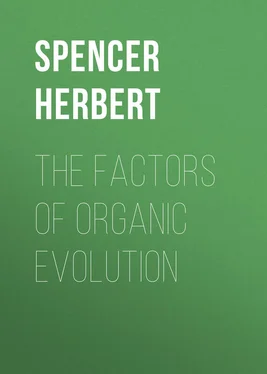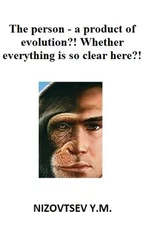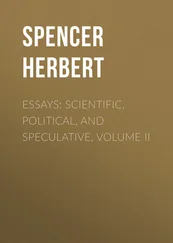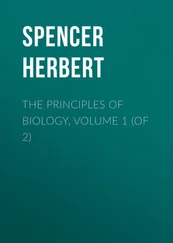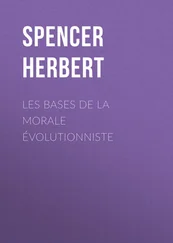Herbert Spencer - The Factors of Organic Evolution
Здесь есть возможность читать онлайн «Herbert Spencer - The Factors of Organic Evolution» — ознакомительный отрывок электронной книги совершенно бесплатно, а после прочтения отрывка купить полную версию. В некоторых случаях можно слушать аудио, скачать через торрент в формате fb2 и присутствует краткое содержание. Жанр: Философия, foreign_antique, foreign_prose, на английском языке. Описание произведения, (предисловие) а так же отзывы посетителей доступны на портале библиотеки ЛибКат.
- Название:The Factors of Organic Evolution
- Автор:
- Жанр:
- Год:неизвестен
- ISBN:нет данных
- Рейтинг книги:3 / 5. Голосов: 1
-
Избранное:Добавить в избранное
- Отзывы:
-
Ваша оценка:
- 60
- 1
- 2
- 3
- 4
- 5
The Factors of Organic Evolution: краткое содержание, описание и аннотация
Предлагаем к чтению аннотацию, описание, краткое содержание или предисловие (зависит от того, что написал сам автор книги «The Factors of Organic Evolution»). Если вы не нашли необходимую информацию о книге — напишите в комментариях, мы постараемся отыскать её.
The Factors of Organic Evolution — читать онлайн ознакомительный отрывок
Ниже представлен текст книги, разбитый по страницам. Система сохранения места последней прочитанной страницы, позволяет с удобством читать онлайн бесплатно книгу «The Factors of Organic Evolution», без необходимости каждый раз заново искать на чём Вы остановились. Поставьте закладку, и сможете в любой момент перейти на страницу, на которой закончили чтение.
Интервал:
Закладка:
Difficulties of another class may next be exemplified – those which present themselves when we ask how there can be effected by the selection of favourable variations, such changes of structure as adapt an organism to some useful action in which many different parts co-operate. None can fail to see how a simple part may, in course of generations, be greatly enlarged, if each enlargement furthers, in some decided way, maintenance of the species. It is easy to understand, too, how a complex part, as an entire limb, may be increased as a whole by the simultaneous due increase of its co-operative parts; since if, while it is growing, the channels of supply bring to the limb an unusual quantity of blood, there will naturally result a proportionately greater size of all its components – bones, muscles, arteries, veins, &c. But though in cases like this, the co-operative parts forming some large complex part may be expected to vary together, nothing implies that they necessarily do so; and we have proof that in various cases, even when closely united, they do not do so. An example is furnished by those blind crabs named in the Origin of Species which inhabit certain dark caves of Kentucky, and which, though they have lost their eyes, have not lost the foot-stalks which carried their eyes. In describing the varieties which have been produced by pigeon-fanciers, Mr. Darwin notes the fact that along with changes in length of beak produced by selection, there have not gone proportionate changes in length of tongue. Take again the case of teeth and jaws. In mankind these have not varied together. During civilization the jaws have decreased, but the teeth have not decreased in proportion; and hence that prevalent crowding of them, often remedied in childhood by extraction of some, and in other cases causing that imperfect development which is followed by early decay. But the absence of proportionate variation in co-operative parts that are close together, and are even bound up in the same mass, is best seen in those varieties of dogs named above as illustrating the inherited effects of disuse. We see in them, as we see in the human race, that diminution in the jaws has not been accompanied by corresponding diminution in the teeth. In the catalogue of the College of Surgeons Museum, there is appended to the entry which identifies a Blenheim Spaniel's skull, the words – “the teeth are closely crowded together,” and to the entry concerning the skull of a King Charles's Spaniel the words – “the teeth are closely packed, p. 3, is placed quite transversely to the axis of the skull.” It is further noteworthy that in a case where there is no diminished use of the jaws, but where they have been shortened by selection, a like want of concomitant variation is manifested: the case being that of the bull-dog, in the upper jaw of which also, “the premolars … are excessively crowded, and placed obliquely or even transversely to the long axis of the skull.” 1 1 It is probable that this shortening has resulted not directly but indirectly, from the selection of individuals which were noted for tenacity of hold; for the bull-dog's peculiarity in this respect seems due to relative shortness of the upper jaw, giving the underhung structure which, involving retreat of the nostrils, enables the dog to continue breathing while holding.
If, then, in cases where we can test it, we find no concomitant variation in co-operative parts that are near together – if we do not find it in parts which, though belonging to different tissues, are so closely united as teeth and jaws – if we do not find it even when the co-operative parts are not only closely united, but are formed out of the same tissue, like the crab's eye and its peduncle; what shall we say of co-operative parts which, besides being composed of different tissues, are remote from one another? Not only are we forbidden to assume that they vary together, but we are warranted in asserting that they can have no tendency to vary together. And what are the implications in cases where increase of a structure can be of no service unless there is concomitant increase in many distant structures, which have to join it in performing the action for which it is useful?
As far back as 1864 ( Principles of Biology , § 166) I named in illustration an animal carrying heavy horns – the extinct Irish elk; and indicated the many changes in bones, muscles, blood-vessels, nerves, composing the fore-part of the body, which would be required to make an increment of size in such horns advantageous. Here let me take another instance – that of the giraffe: an instance which I take partly because, in the sixth edition of the Origin of Species , issued in 1872, Mr. Darwin has referred to this animal when effectually disposing of certain arguments urged against his hypothesis. He there says: —
“In order that an animal should acquire some structure specially and largely developed, it is almost indispensable that several other parts should be modified and co-adapted. Although every part of the body varies slightly, it does not follow that the necessary parts should always vary in the right direction and to the right degree” (p. 179).
And in the summary of the chapter, he remarks concerning the adjustments in the same quadruped, that “the prolonged use of all the parts together with inheritance will have aided in an important manner in their co-ordination” (p. 199): a remark probably having reference chiefly to the increased massiveness of the lower part of the neck; the increased size and strength of the thorax required to bear the additional burden; and the increased strength of the fore-legs required to carry the greater weight of both. But now I think that further consideration suggests the belief that the entailed modifications are much more numerous and remote than at first appears; and that the greater part of these are such as cannot be ascribed in any degree to the selection of favourable variations, but must be ascribed exclusively to the inherited effects of changed functions. Whoever has seen a giraffe gallop will long remember the sight as a ludicrous one. The reason for the strangeness of the motions is obvious. Though the fore limbs and the hind limbs differ so much in length, yet in galloping they have to keep pace – must take equal strides. The result is that at each stride, the angle which the hind limbs describe round their centre of motion is much larger than the angle described by the fore limbs. And beyond this, as an aid in equalizing the strides, the hind part of the back is at each stride bent very much downwards and forwards. Hence the hind-quarters appear to be doing nearly all the work. Now a moment's observation shows that the bones and muscles composing the hind-quarters of the giraffe, perform actions differing in one or other way and degree, from the actions performed by the homologous bones and muscles in a mammal of ordinary proportions, and from those in the ancestral mammal which gave origin to the giraffe. Each further stage of that growth which produced the large fore-quarters and neck, entailed some adapted change in sundry of the numerous parts composing the hind-quarters; since any failure in the adjustment of their respective strengths would entail some defect in speed and consequent loss of life when chased. It needs but to remember how, when continuing to walk with a blistered foot, the taking of steps in such a modified way as to diminish pressure on the sore point, soon produces aching of muscles which are called into unusual action, to see that over-straining of any one of the muscles of the giraffe's hind-quarters might quickly incapacitate the animal when putting out all its powers to escape; and to be a few yards behind others would cause death. Hence if we are debarred from assuming that co-operative parts vary together even when adjacent and closely united – if we are still more debarred from assuming that with increased length of fore-legs or of neck, there will go an appropriate change in any one muscle or bone in the hind-quarters; how entirely out of the question it is to assume that there will simultaneously take place the appropriate changes in all those many components of the hind-quarters which severally require re-adjustment. It is useless to reply that an increment of length in the fore-legs or neck might be retained and transmitted to posterity, waiting an appropriate variation in a particular bone or muscle in the hind-quarters, which, being made, would allow of a further increment. For besides the fact that until this secondary variation occurred the primary variation would be a disadvantage often fatal; and besides the fact that before such an appropriate secondary variation might be expected in the course of generations to occur, the primary variation would have died out; there is the fact that the appropriate variation of one bone or muscle in the hind-quarters would be useless without appropriate variations of all the rest – some in this way and some in that – a number of appropriate variations which it is impossible to suppose.
Читать дальшеИнтервал:
Закладка:
Похожие книги на «The Factors of Organic Evolution»
Представляем Вашему вниманию похожие книги на «The Factors of Organic Evolution» списком для выбора. Мы отобрали схожую по названию и смыслу литературу в надежде предоставить читателям больше вариантов отыскать новые, интересные, ещё непрочитанные произведения.
Обсуждение, отзывы о книге «The Factors of Organic Evolution» и просто собственные мнения читателей. Оставьте ваши комментарии, напишите, что Вы думаете о произведении, его смысле или главных героях. Укажите что конкретно понравилось, а что нет, и почему Вы так считаете.
